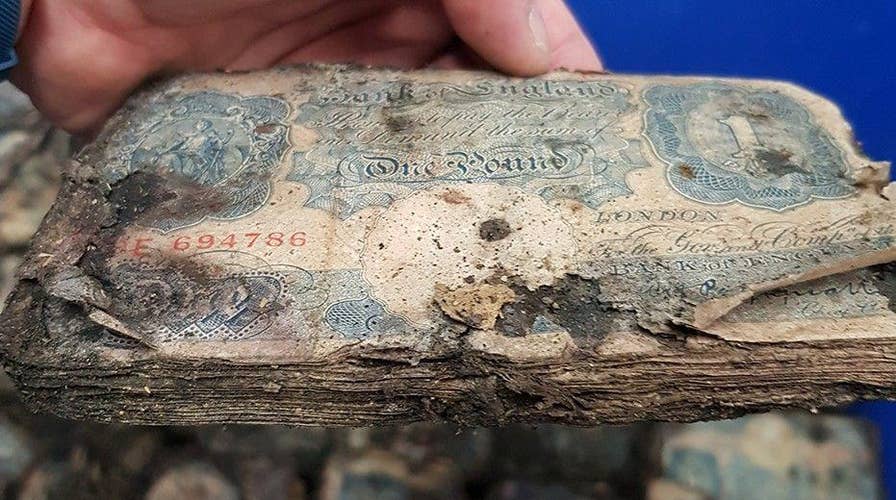WWII-era money worth $2.5M found under store
Money from the WWII-era has been discovered underneath a store frequented by Winston Churchill and Lady Clementine.
Sir Winston Churchill, perhaps the greatest orator of the 20th century, is renowned for delivering awe-inspiring speeches, including the legendary "We shall fight on the beaches" address. A startling discovery was recently made at a branch of Churchill's favorite tailor shop from yesteryear.
Several bank notes dating all the way back to World War II, worth $2.5 million in today's money, have been found at the location of Cotswold Outdoor store in Brighton, which was formerly Bradley Gowns, a branch of a well-known London-based furrier frequented by Churchill and his wife, Lady Clementine.

Eric Bradley signed up on September 3 1939, when war on Germany was declared. One million pounds in old money was uncovered under the site of his old shop in Brighton. It's thought he buried it as a war chest before joining the RAF. (Credit: ARGUS/SAX ROHMER LTD)
The face value of the £1 and £5 notes totals about £30,000, according to the BBC, which first reported the news. In today's money, adjusting for inflation, the notes are worth approximately £1 million ($2.5 million).
DISCOVERY OF A LIFETIME: 'FAKE' GOLD COIN ACTUALLY WORTH MILLIONS
The notes were found by Cotswold Outdoor's owner, Russ Davis, when construction workers were tearing up old layers of carpet and tile. Davis, who noted that the notes were "caked in dirt," did not realize what he had initially.
"I just thought it was a block of wood, so I snapped it in half and then found a £1 note," Davis said, according to an interview with the BBC.
Sussex police are now in possession of the notes and keeping them safe until they figure out where the money came from and who is the rightful owner, The New York Post reported.
Davis added that he knew the notes were exceptionally old, but did not realize how old, because of the condition they were in. "Some of them were really bad, where you could see the metal water marks that run through the notes," he added.
The notes are blue, which was the color of emergency wartime currency, issued by the Bank of England in 1940. Today, England's currency is greenish in color. The £1 note no longer exists, having been withdrawn in March 1988, by the Bank of England.
Davis also recognized that the notes were old because of the amount of flooring that had been ripped up to get them. After further inspection, the notes were identified as being from around World War II.
MEDIEVAL 'POT O' GOLD' DISCOVERED BY CONSTRUCTION WORKERS
Davis said that it was unclear who buried the notes, but suspected they may have been left there "from a bank robbery, or been stashed during the war by someone who died."
It's also been speculated that they could've been buried by a member of the family that owned Bradley Gowns. Speaking with the New York Post, Howard Bradley, heir to the old family business, speculated the money could've been put there in case the Nazis invaded.
“We are English back to I don’t know when, but I know there is Jewish blood in the family,” Bradley said in comments obtained by the Post. “They might have worried they’d have to buy their way out of England. Maybe it was part of a getaway plan.”
The World War II-era bank notes are not the only old monies found in recent weeks causing a stir.
A rare nickel from 1913, known as the Eliasberg 1913 Liberty Head Nickel and one of only five ever produced, will be auctioned by Stack’s Bowers Galleries in August. It is expected to sell for an estimated price between $3 million and $5 million.
2,200-YEAR-OLD GOLD COIN DISCOVERED IN EGYPT
In April, it was reported that an anonymous New England man was in possession of a small gold coin with a $5 denomination from the San Francisco Mint during the height of the California Gold Rush. The coin, originally thought to be a fake, was certified as genuine and is now estimated to be worth "millions of dollars."
Fox News' James Rogers contributed to this report. Follow Chris Ciaccia on Twitter @Chris_Ciaccia

